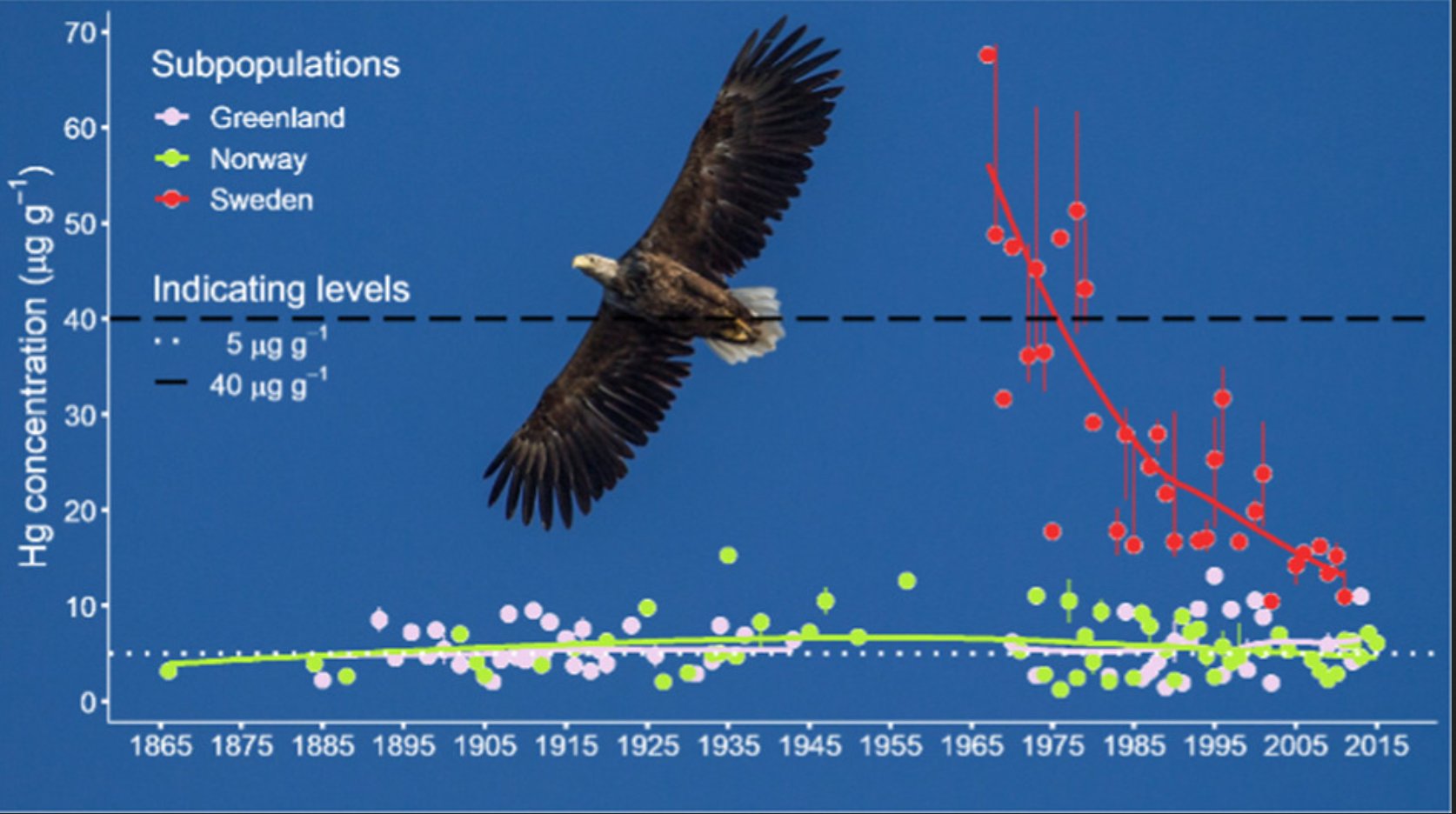Temporal trends of mercury differ across three northern white-tailed eagle (Haliaeetus albicilla) subpopulations
New publication by Jiachen Sun, Jan Ove Bustnes, Björn Helander et al.

Abstract:
The spatiotemporal trends of mercury (Hg) are crucial for the understanding of this ubiquitous and toxic contaminant. However, uncertainties often arise from comparison among studies using different species, analytical and statistical methods. The long-term temporal trends of Hg exposure were reconstructed for a key sentinel species, the white-tailed eagle (Haliaeetus albicilla). Body feathers were sampled from museum collections covering 150 years in time (from 1866 to 2015) from West Greenland (n = 124), Norway (n = 102), and Sweden (n = 87). A significant non-linear trend was observed in the Norwegian subpopulation, with a 60% increase in exposure occurring from 1866 to 1957 followed by a 40% decline until 2015. In the Swedish subpopulation, studied at a later period, the Hg exposure showed a drastic decline of 70% from 1967 to 2011. In contrast, no significant trend could be observed in the Greenland subpopulation. The additional analysis of dietary proxies (δ13C and δ15N) in general increased performance of the temporal trend models, but this was dependent on the subpopulation and study period. The downward trend of Hg coincided with the decreasing δ13C and δ15N in the Norwegian subpopulation, suggesting a potential dietary mitigation of Hg contamination. Hg exposure in both the Greenland and Norwegian subpopulations was consistently below the suggested threshold for adverse health effects (40.0 μg g−1), while the maximum exposure in the Swedish subpopulation was distinctively elevated (median: 46.0 μg g−1) and still remains well above natural background concentrations (maximum 5.0 μg g−1).
